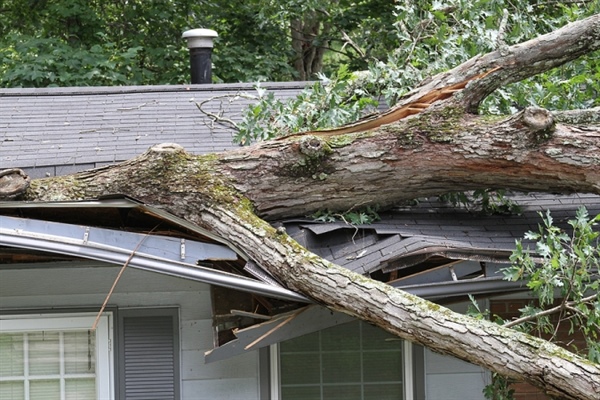What Causes a Tree to Fall in a Storm and What Can You Do to Prevent It?

It’s no surprise that the strong winds blowing in a storm have the potential to uproot trees. The trees that fall in a storm can be dangerous and often fatal. Therefore, you must make more efforts to strengthen the placement of these trees and prevent them from falling.
In this post by Restoration Network, we will discuss factors that make a tree vulnerable to being uprooted and measures you can take to prevent it.
3 Factors That Cause a Tree to Fall
Several factors can contribute to a tree falling, including wet soil, root damage, and wind.
Wet Soil
It is easier for trees to fall when their roots are engrossed in wet or soggy soil. This primarily occurs due to improper root growth in such an environment. Damp soil can result from disruption of underground water systems or improper water drainage around the trees.
Since the soil is soggy, the roots get dislodged and weakened from underneath. This makes the tree vulnerable to falling in a storm.
Root Damage
The tree can fall quite easily if the roots have been damaged due to any external influence. The trees' root damage could result from installing utility lines underground or other reasons.
The trees take a considerable time (around 10-15 years) to respond to such disruptions. During this period, they are vulnerable to falling.
Direction and Force of the Wind
The direction of the wind is a significant factor in tree falling. Trees usually grow in the direction of the wind in the area. Their roots grow in a specific agonistic pattern to the wind. This growth pattern makes them more stable and supports them.
However, when the direction of a strong wind is opposite to the roots of the trees, it can uproot them.
3 Things You Can Do to Prevent a Tree From Falling
Here are some ways you can prevent a tree from falling!
Pruning
One way to prevent a tree from falling is to prune it. A tree should be pruned evenly from all sides to stand firmly against wind resistance.
Moreover, it is better to prune any branches that may be old or dying off. It would help if you were careful not to overwater or over-fertilize the tree. It can cause the trees to grow disproportionately and not be effective against the wind.
Eliminate Trees Unsuitable for the Environment
Often, the trees are growing in an unsuitable environment for them, such as soggy soil. If the trees grow in an unsuitable environment, their roots will not develop properly.
Improper growth of roots would make them susceptible to uprooting during heavy wind blows.
Inspect the Trees After Every Storm
You should inspect the trees after every storm and figure out the damage the storm caused. Broken branches and debris indicate that the tree can eventually fall if a storm were to occur again.
In such cases, the tree should be removed voluntarily to avoid unwanted troubles.
Contact Us Immediately in a Post-Storm Emergency!
It is common for trees to fall during storms. If a tree has fallen after a storm on your property, you can call us at 612-564-0202, and we will be there to help.
Restoration Network specializes in restoring properties damaged due to fire, water, or storm. Our highly skilled staff can help you restore your house after storm damage. If you require our immediate help, you can contact our emergency services which are available 24/7.